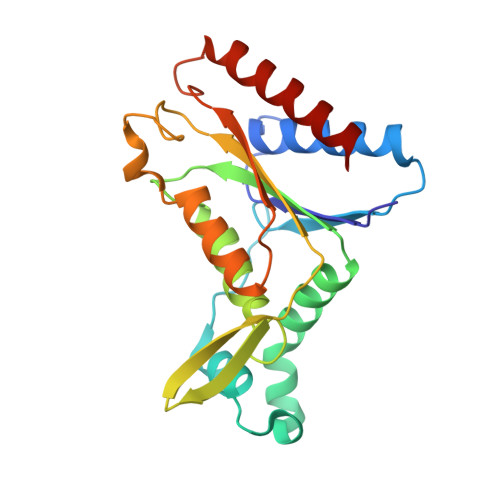A Novel Mechanism for Azoreduction
Ryan, A., Laurieri, N., Westwood, I., Wang, C.-J., Lowe, E., Sim, E.(2010) J Mol Biol 400: 24-37
- PubMed: 20417637
- DOI: https://doi.org/10.1016/j.jmb.2010.04.023
- Primary Citation of Related Structures:
3LT5 - PubMed Abstract:
Azoreductases are important due to their ability to activate anti-inflammatory azo pro-drugs and to detoxify azo dyes. Three genes encoding azoreductases have been identified in Pseudomonas aeruginosa. We describe here a comparison of the three enzymes. The pure recombinant proteins each have a distinct substrate specificity profile against a range of azo substrates. Using the structure of P. aeruginosa azoreductase (paAzoR) 1 and the homology models of paAzoR2 and paAzoR3, we have identified residues important for substrate specificity. We have defined a novel flavin mononucleotide binding cradle, which is a recurrent motif in many flavodoxin-like proteins. A novel structure of paAzoR1 with the azo pro-drug balsalazide bound within the active site was determined by X-ray crystallography and demonstrates that the substrate is present in a hydrazone tautomer conformation. We propose that the structure with balsalazide bound represents an enzyme intermediate and, together with the flavin mononucleotide binding cradle, we propose a novel catalytic mechanism.
Organizational Affiliation:
Department of Pharmacology, University of Oxford, Mansfield Road, Oxford OX1 3QT, UK.

















